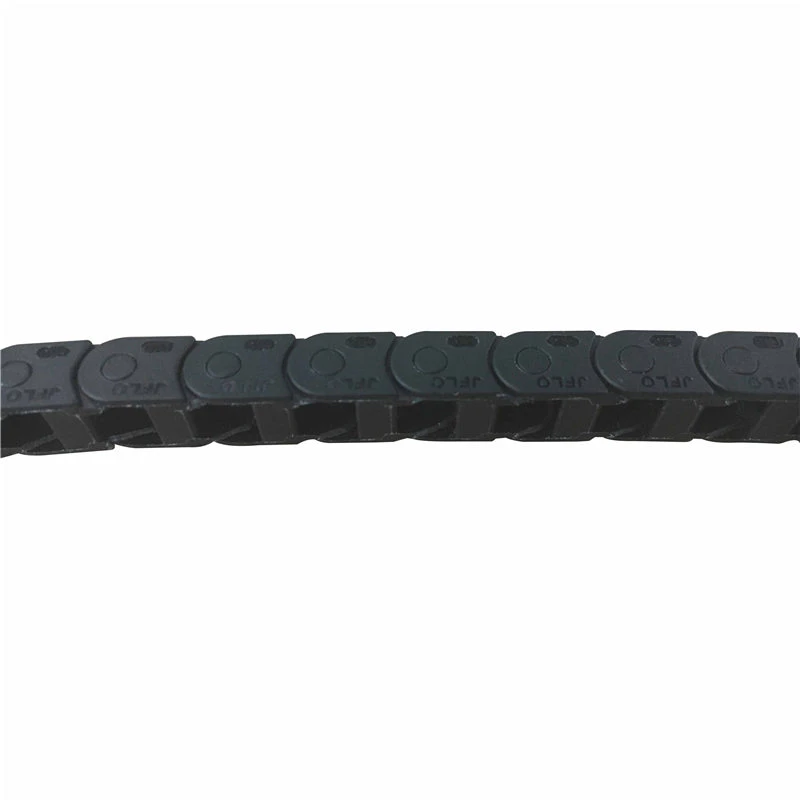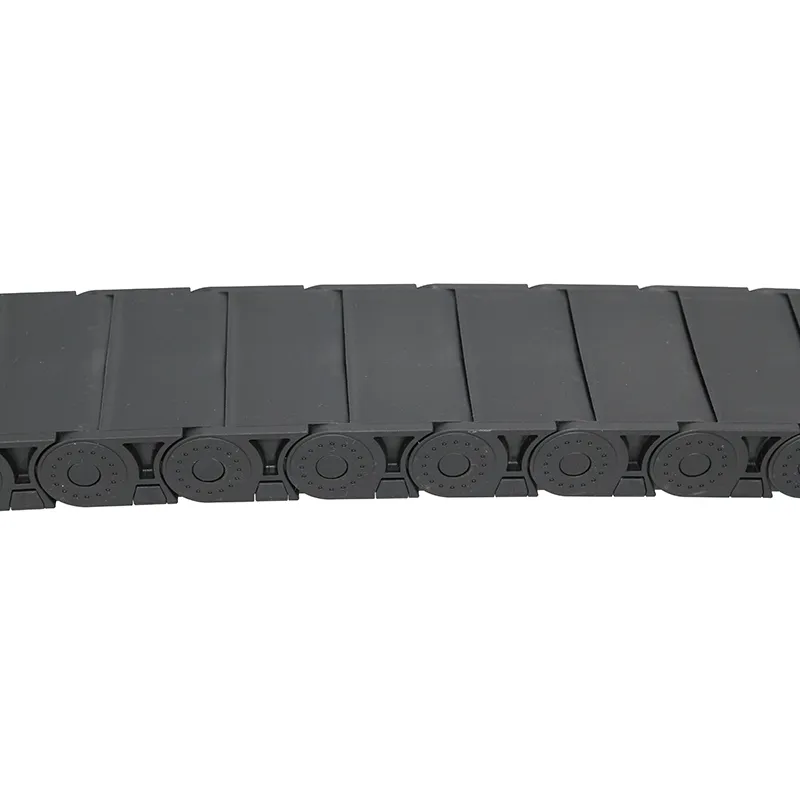cable carrier
Cable carriers, often referred to as drag chains or energy chains, are critical components in modern mechanical and automation systems. These ingenious devices house and guide flexible cables and hoses, aiming to reduce wear and stress, thereby prolonging the lifespan of the encased components. Unlike ordinary conduits, cable carriers offer a dynamic solution that is both protective and efficient, making them indispensable in industries ranging from manufacturing and robotics to medical technology and beyond.

In recent years, advancements in cable carrier technology have revolutionized how industries manage cable and hose systems. Traditionally, these carriers were made of steel, which, while robust, was often heavy and less adaptable to intricate movements. Today, many industries are transitioning to high-performance polymers, offering lightweight yet durable alternatives. These modern materials not only reduce the overall weight of the machinery but also contribute to lower energy consumption due to reduced friction and inertia. This evolution in material science has made cable carriers more resilient against harsh environments, including extreme temperatures and corrosive chemicals, ensuring that they remain functional in even the most challenging conditions.
From a technical perspective, selecting the right cable carrier involves understanding specific operational requirements and constraints. One must consider the required bend radius of the cables, the load-bearing capacity of the carrier, and the type of movement the machinery performs. Static installations differ significantly from dynamic applications where multidirectional movement is common. For instance, robotics applications often demand cable carriers with a high degree of flexibility and precision. The newest models cater to these needs by providing modular designs that can be easily customized and reconfigured, allowing machinery to adapt swiftly to new tasks without significant downtime—a crucial feature in fast-paced industrial environments.

Accuracy and reliability in data transmission are paramount, particularly in sectors like medical technology and aviation, where the stakes are high. In these fields, the demand for uninterrupted performance has led manufacturers to innovate with hybrid cable carriers that integrate power, data, and even fluid conveyance capabilities within a singular, streamlined system. By consolidating these functions, hybrid cable carriers reduce the complexity and potential failure points caused by traditional separate systems, enhancing overall system reliability.
cable carrier
The environmental impact of industrial operations is increasingly scrutinized, urging companies to adopt more sustainable practices. Cable carrier manufacturers respond by developing products that adhere to environmentally friendly standards and processes. Many manufacturers now utilize recycled materials in their production lines and ensure that their products are recyclable at the end of their lifecycle. This commitment not only enhances the sustainability of cable carriers but also aligns with global directives for reducing industrial carbon footprints.
In terms of expertise, working with cable carriers requires a deep understanding of both mechanical systems and the specific needs of each application. Technicians and engineers must be adept in anticipating potential challenges that may arise from the interaction of the carriers with other system components. As such, they often employ advanced analysis tools and simulations to predict wear patterns and lifecycle costs, ensuring that each carrier is optimized for maximum efficiency and longevity.
In conclusion, cable carriers are more than just a protective conduit for cables and hoses; they are a fundamental part of any system that demands precision, reliability, and efficiency. Their evolution from heavy metal forms to sophisticated polymer and hybrid designs underscores the need for constant innovation in industrial components—innovation that not only improves performance and flexibility but also addresses sustainability concerns. For industries seeking to enhance their operations while minimizing risk and environmental footprint, investing in advanced cable carrier systems is a strategic move. As these systems continue to evolve, their role will become even more critical in enabling the smart factories and automated solutions of the future.








